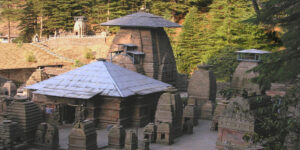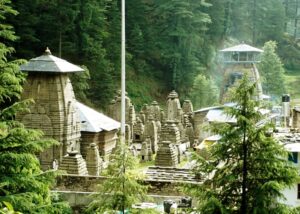Jageshwar Dham: A Famous Temple from the Katyuri Era
Uttarakhand, also known as the Dev Bhumi or the land of Gods, has an archaeologically rich history with many ancient to middle ages temples still flourishing across the state. This Himalayan state had long back developed its own style of art and architecture based on the natural resources readily available from the mountains: wood and stone. Among most of the temples situated in this region, the most beautiful ones were built mainly during the Katyuri dynasty reign, and these are found mostly in clusters. The Katyuri dynasty was of a branch of Kunindas origin and was founded by Vashudev Katyuri. Originally, from Joshimath, during their reign they dominated lands of varying extent from the ‘Katyuri’ (modern day Baijnath) valley in Kumaon, between 7th and 11th centuries AD, and established their capital, at Baijnath in Bageshwar district, which was then known as Kartikeyapura and lies in the centre of ‘Katyur’ valley. Katyuri were displaced by the Chand Kings in 11th century AD. Architectural remains of the Katyur dynasty’s rule can be found in Baijnath and Dwarahat. Uttarakhand saw a frenzied period of temple building activity from 7th century CE onwards, owing to a fervor of religious movement, especially under the Katyuri dynasty.(source: Archaeological Department)
Among the more famous temples from the Katyuri era is the Jageshwar Dham, which is at a height of 6,135 feet, and lies around 34 km from Almora. The temple complex is situated in a densely wooded valley on the left bank of the river Jatganga, and is enclosed on all sides by tall deodars, along with a few spattering of village houses and dharamsalas. The temple cluster consists of 124 small and big stone temples and is believed to have been built between 7th -11th century CE, mostly by the Katyuri kings. The temples here are dedicated to various deities that include Shiva, Lakulisha, Jageshwar, Kedareshwar, Mrityunjay, Pushti devi, Lakshmi, Durga, Chandika, etc.
As per general beliefs, the Pandavas, while on their Mahaprasthan towards Swargarohani, had performed their last rites at Jageshwara, on the banks of the holy river Jatganga. It is, for this reason, the banks of Jatganga are used as a cremation ground for those living in nearby villages.Jageshwara temple is most well-known for its Swayambhu Linga, also known as the Nagesh Darukabane, and is the eighth one among the 12 jyotirlingas spread across India. There are more than 25 inscriptions seen here on the temple walls and pillars written in Sanskrit and Brahmi.
These inscriptions belong to different time-periods and speak of devotion, renovations, and land donations under the Katyuris, the Malla kings, and the Chand kings.A little away from the Jageshwara cluster stand the Dandeshwara temple group, near the confluence of the Kirodi Ganga and Niroli gad.
There are 14 temples here ranging from 7th -13th century CE, and the main temple has a shivaling, which is an uncarved natural rock. The third cluster of temples known as the Kubera cluster has three temples and stands on the hill opposite to the Jageswara temple cluster on the right bank of the Jatganga.




